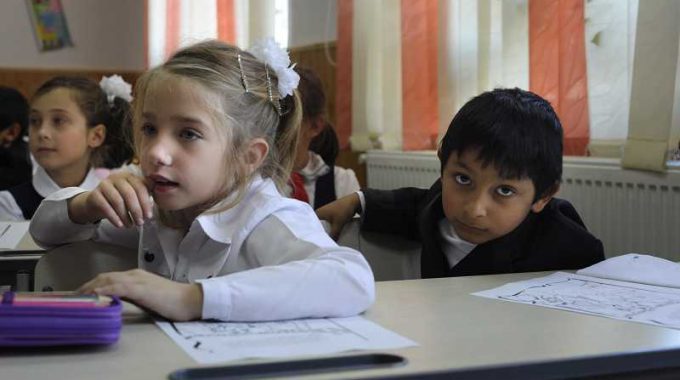
Roma Minority within the European Union
The Roma are the largest ethnic minority in Europe, with approximately 6 million Roma living in the EU. Many Roma face poor living conditions, discrimination, and limited access to education and employment. According to the European Union Agency for Fundamental Rights, about 80% of Roma live in poverty. Many Roma live in households without access to drinking water, and 33% lack indoor toilets. About 25% of Roma feel they have been discriminated against in everyday situations such as job seeking, housing, work, healthcare, and education in the past year. Many Roma traditionally do not have access to basic education, leading to lifelong and intergenerational consequences for their communities.
Early Initiatives
The EU has focused on Roma inclusion since the mid-1990s to address social exclusion, discrimination, and segregation faced by the largest ethnic minority (Roma) in Europe. In the second half of the 1990s, the European Commission called for national measures for countries with large Roma populations to intensify the social integration of the Roma population. In 2000, the Commission called for the transposition of the Racial Equality Directive. In December 2007, the European Council recognized for the first time that all means should be used to improve their programs. In July 2008, the Commission adopted a communication on non-discrimination and gender equality, which included Roma.
EU Strategic Framework for Roma Equality, Inclusion, and Participation 2020 – 2030
The current EU strategic framework for Roma equality, inclusion, and participation 2020 – 2030 includes a three-pillar approach focused on promoting equality, inclusion, and participation, in addition to the existing four-sector approach (education, employment, health, and housing). The aim is to complement the previous socio-economic inclusion approach by promoting equality with a focus on combating discrimination and anti-Roma sentiment and supporting Roma participation in political, economic, and cultural life.
The framework aims to address the socio-economic challenges faced by the Roma community in the European Union. It focuses on promoting equality, reducing poverty, and ensuring the participation of Roma individuals in all aspects of society. The context includes discrimination, exclusion, and marginalization of Roma, leading to disparities in education, employment, healthcare, and housing.
The EU has set specific targets to be achieved by 2030, including:
Reducing the poverty gap between Roma and non-Roma populations.
Halving the discrimination against Roma.
Ensuring access to clean tap water for all Roma households.
Improving life expectancy and housing conditions.
Increasing Roma participation in decision-making processes.
The framework proposes measures such as:
Eliminating segregated healthcare services for Roma.
Supporting Roma representation in healthcare professions.
Combating disease outbreaks in Roma communities.
Addressing digital exclusion to ensure access to healthcare.
Slovakia
As part of the Roma Civil Monitor 2018 pilot project, state policies aimed at addressing inequalities, discrimination, and anti-Roma sentiment faced by Roma in employment, housing, and healthcare are being monitored.
Employment
Monitoring results in Slovakia showed that while the overall employment rate of Roma increased due to economic growth, vulnerable groups such as young people and women still struggle to enter the labor market. Roma are often employed in short-term, unstable positions, making them more susceptible to layoffs during economic downturns. Roma men, especially in construction, often face informal employment without proper labor rights and lower wages than the legally mandated minimum wage. Roma high school graduates have difficulty finding employment, for example, due to a lack of previous internship experience during their studies. Employment disparities between Roma men and women are alarming. In 2017, only 16% of Roma women had permanent employment compared to 49% of non-Roma women. Active labor market policies (ALMPs), funded by the European Social Fund (ESF), had a controversial impact on Roma employment because the legislation does not specifically include Roma as a target group of disadvantaged job seekers. Instead, disadvantage is defined based on age. According to the Civil Monitor, these laws maintain inequalities rather than promote integration. Although employment offices were effective in providing retraining courses and ensuring participation in work programs, they struggle to achieve real employment outcomes. Placing job seekers in the labor market remains a challenge. Employment offices rarely reach out to Roma living in marginalized areas, especially women.
Housing
The right to adequate housing is a human right, yet Slovak authorities struggle to provide it to citizens, both the majority and the Roma population. Roma are disproportionately affected by inadequate housing. In Slovakia, there are more than 800 concentrated Roma settlements where almost no non-Roma live. These settlements often suffer from substandard living conditions, including poor hygiene and lack of public services.
Approximately 16% of Roma families live in substandard housing, including shacks, wooden houses, and container homes. Roma settlements face environmental risks such as toxic waste, landfills, and floods, affecting their health and well-being.
The lower standard housing system, introduced in 2002, represents the most significant housing program aimed at addressing the housing needs of the Roma community. Unfortunately, even municipalities willing to invest in Roma housing often do not do so in an integrated manner. Even alternative housing programs, such as self-help construction, are usually located in “areas designated for Roma.” Legal changes simplifying the legalization of land in Roma settlements are promising, but their effectiveness depends on the willingness of local governments to implement them. A significant legal victory occurred in 2018 when the NGO Via Iuris successfully fought against housing segregation in the town of Sabinov. The NGO successfully defended Roma families who were evicted from the center of Sabinov to the newly created segregated area of Telek. It was the first legal victory concerning a housing segregation case, and the plaintiffs sued the town and the Ministry of Transport and Construction for violating the prohibition of discrimination. Efforts in Luník IX demonstrate gradual renewal and offer hope for improving living conditions. Private employment agencies, such as US Steel Košice or Pasell Slovakia Ltd, have long been implementing activities aimed at helping Roma communities, such as recruiting low-skilled workers or retraining courses.
Health
Recent data highlights significant disparities in health outcomes between the Roma and non-Roma populations. The average life expectancy of Roma is six years shorter than that of the non-Roma population, and the infant mortality rate of Roma children is three times higher.
The main initiative of the Slovak Republic to combat these disparities is the national project managed by the Ministry of Health’s agency, Healthy Regions, which employs 245 health mediators. Health mediators raise health awareness and improve access to healthcare services. A recent pilot program includes health mediators working in maternity wards.
Health mediators play a key role in addressing the lower vaccination rates in Roma communities. Their impact was evident during the measles epidemic in eastern Slovak districts in 2018. The national program employs 245 Roma health mediators, 200 of whom are Roma women. These mediators operate in 263 locations in central and eastern Slovakia, along with 8 health mediators in the Bratislava region. Their role is to bridge gaps in healthcare access and address various health-related issues. In 2015, they invited 53,812 clients for vaccinations and preventive visits, and between 2017 and 2018, they reported 28,474 vaccination-related interventions.
Despite high health insurance coverage (95%), unpaid debts and administrative procedures can hinder access to healthcare. Significant barriers also include hidden costs, distance, and low awareness of healthcare. Slovakia faces challenges in ensuring an adequate number of healthcare workers per capita, impacting vulnerable groups.
Discrimination persists in healthcare facilities, including the segregation of Roma women and children. Protecting the reproductive rights of Roma women and promoting awareness of sexual health must remain key policy areas.


Sources:
https://www.europarl.europa.eu/RegData/etudes/BRIE/2021/690629/EPRS_BRI%282021%29690629_EN.pdf
Celebrate Who You are (epha.org)
rcm-civil-society-monitoring-report-2-slovakia-2018-eprint-fin.pdf (ceu.edu)
cps-book-shadow-limelight-2022.pdf (ceu.edu)
eu_roma_strategic_framework_for_equality_inclusion_and_participation_for_2020_-_2030_0.pdf (europa.eu)
80% of Roma live in poverty | European Union Agency for Fundamental Rights (europa.eu)



